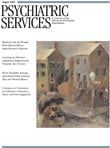Understanding and Assessing Trauma in Children and Adolescents: Measures, Methods, and Youth Context
In the scholarly yet practical book, Understanding and Assessing Trauma in Children and Adolescents Kathleen Nader has compiled an extremely comprehensive clinical guide to understanding the assessment of trauma in children and adolescents. This is a first in the field and much needed for practitioners and researchers alike. Nader makes it clear that there are many issues that are important to evaluating children and adolescents. In response to these issues, she has compiled the most important and essential literature in the field, and she uses her clinical experience to provide important guidance on the topic. From clinical history to recent advances, this book covers a wide range of measures for assessing trauma.
The book also provides useful information for understanding the influence of environment, culture, and family background on assessment and about how to write reports regarding traumatized youths. Case examples included in the book help the integration of the different facets of assessing children and adolescents. Especially helpful and well discussed is a section on the necessary considerations and steps for the cultural and developmental adaptation of assessment measures for children of diverse cultures.
The book provides an excellent introduction for clinicians less familiar with youth trauma. It also serves as an important reference for more experienced clinicians and researchers. The author is well known among her colleagues in traumatology worldwide and demonstrates a career-long interest in working with youths who have experienced everything from parental homicides to terrorism, disasters, and other severe trauma. Therefore her approach is thoughtful and considerate of the information needed by frontline clinicians who may be working with traumatized youths.
Although the book is of tremendous value, it is not an easy read. It is full of information and in many ways serves as a good reference book rather than a casual read. Because this book fills a much needed gap in the trauma literature, the urgency in getting it to press may have resulted in some poorly edited text. At times the case examples are not fully explained or integrated with the text, so I look forward to future editions that may further improve upon the style and add greater value to the case examples. For now, the scope of information and depth presented in this book makes it a worthwhile read for mental health professionals interested in catching up with the latest understanding of the psychological impact and assessment of child and adolescent trauma.



